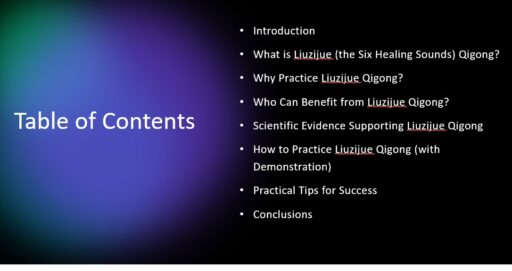Liuzijue Qigong, or the Six Healing Sounds Qigong, is an ancient practice that integrates breath control, vocalization, and gentle movements to enhance lung function and overall well-being.
A recent study published in BMC Complementary Medicine and Therapies found that practicing Liuzijue for 12 weeks significantly improved lung strength and reduced anxiety in individuals with Parkinson’s disease.

A tutorial with details is available for ATCQA Members and Certified Instructors/Practitioners. Other people can purchase the tutorial for a small fee in our online store.
Why Practice Liuzijue Qigong?
- Enhances Lung Function – Research shows it improves vital lung metrics such as Forced Vital Capacity (FVC) and Peak Expiratory Flow (PEF), aiding in better breathing efficiency.
- Reduces Stress and Anxiety – Deep, rhythmic breathing activates the parasympathetic nervous system, promoting relaxation.
- Accessible to All – No equipment required, and it’s suitable for all fitness levels, including seniors and those with respiratory conditions.
How to Get Started
- Find a Quiet Space – Stand or sit comfortably with a straight spine.
- Practice the Six Healing Sounds – Exhale while vocalizing each sound, targeting different organs:
- Xu (Liver) – Soft “Shu” sound with arms extending forward.
- He (Heart) – Gentle sigh with hands rising to chest.
- Hu (Spleen) – Deep “Hoo” sound with circular arm motions.
- Si (Lungs) – Soft hissing “Si” sound with open hands.
- Chui (Kidneys) – Whispered “Chway” with hands on lower back.
- Xi (Triple Burner) – Smiling “Shee” exhale with hands moving outward.
Practicing Liuzijue for 10–30 minutes daily can strengthen your respiratory system and improve mental clarity.